A curious collection of characters are present Lorca’s painted operas depicting the darker sides of human psychology. Read about his narrative paintings, his time with Odd Nerdrum, his inspiration, and more in this interview.
BY DAVID MOLESKY
The Chilean artist Guillermo Lorca (b. 1984) and I first met about a decade ago at the master painter Odd Nerdrum’s farm in southern Norway. Initially he struck me as a South American James Dean, handsome and ruggedly attired. Lorca’s English was still undeveloped and became a source of much mutual laughter, but soon I realized how extremely well-read he is in English and Russian literature.
When he shared photographs of his work, I was floored, especially because I assumed someone with that much talent would betray more of an ego. It was hard to wrap my head around why Lorca had traveled so far to study with Nerdrum when he was already doing well in Chile, so I asked him directly. He replied without hesitation that the mission of this stay in the northern hemisphere was to ascertain Rembrandt’s painting secrets by studying his greatest works in the flesh (primarily in the Netherlands), and to learn more about those techniques from Nerdrum, who is considered by some a veritable Rembrandt Reincarnated.
While we were staying on Nerdrum’s farm, Lorca produced a dozen or so incredibly life-like self-portraits from a mirror. These paintings displayed a remarkable maturity in his establishment of pictorial hierarchies — knowing which areas to develop with thickness and detail, and which areas to leave looser and less defined. During breaks, Lorca and I would sit with Nerdrum and sip coffee. Lorca often tried to steer the conversation with pertinent questions like “What colors did Rembrandt use?”

Equipped with his newly acquired experiences and Old Master wisdoms, Lorca unleashed a torrent of ambitious projects as soon as he returned to Chile. Among them were a series of colossal portraits depicting various character types — old, young, male, female — that were installed in a Santiago subway station. Lorca seems to have no trouble expanding the virtuosity I first glimpsed in his easel paintings into mural-sized compositions. Especially in larger works, he demonstrates an ability to paint accurately loose as well as thick and thin.
He not only uses paint to illustrate reality but can also make paint mimic materials in a manner that reminds us of Rembrandt, Velázquez, Sargent, Zorn, and Repin.
More recently, Lorca has been making dynamic paintings based on the digitally collaged images he creates with Photoshop. These feature the same ferocious action seen in Rubens’s hunting scenes, for example the masterly “Wolf and Fox Hunt” at New York’s Metropolitan Museum of Art. These large, ambitious works highlight the intense interactions between innocence and the violence of nature. Lolita girls, dogs, meat, blood, milk, birds of prey, and fire form the cast of characters in Lorca’s painted operas depicting the darker sides of human psychology.
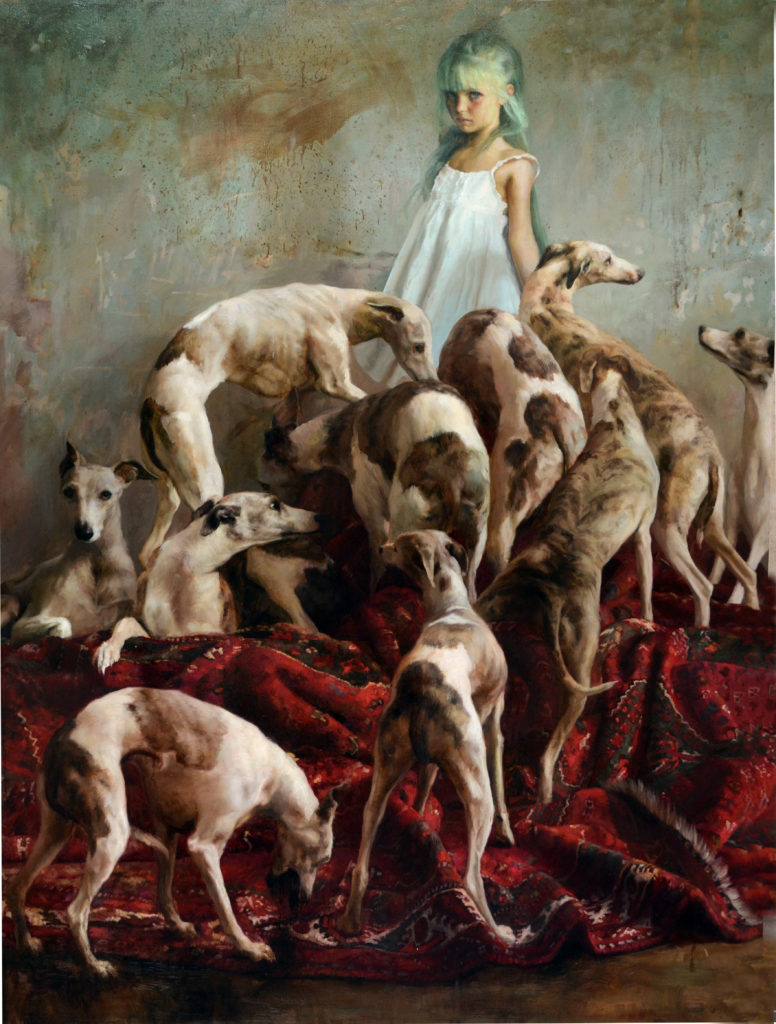
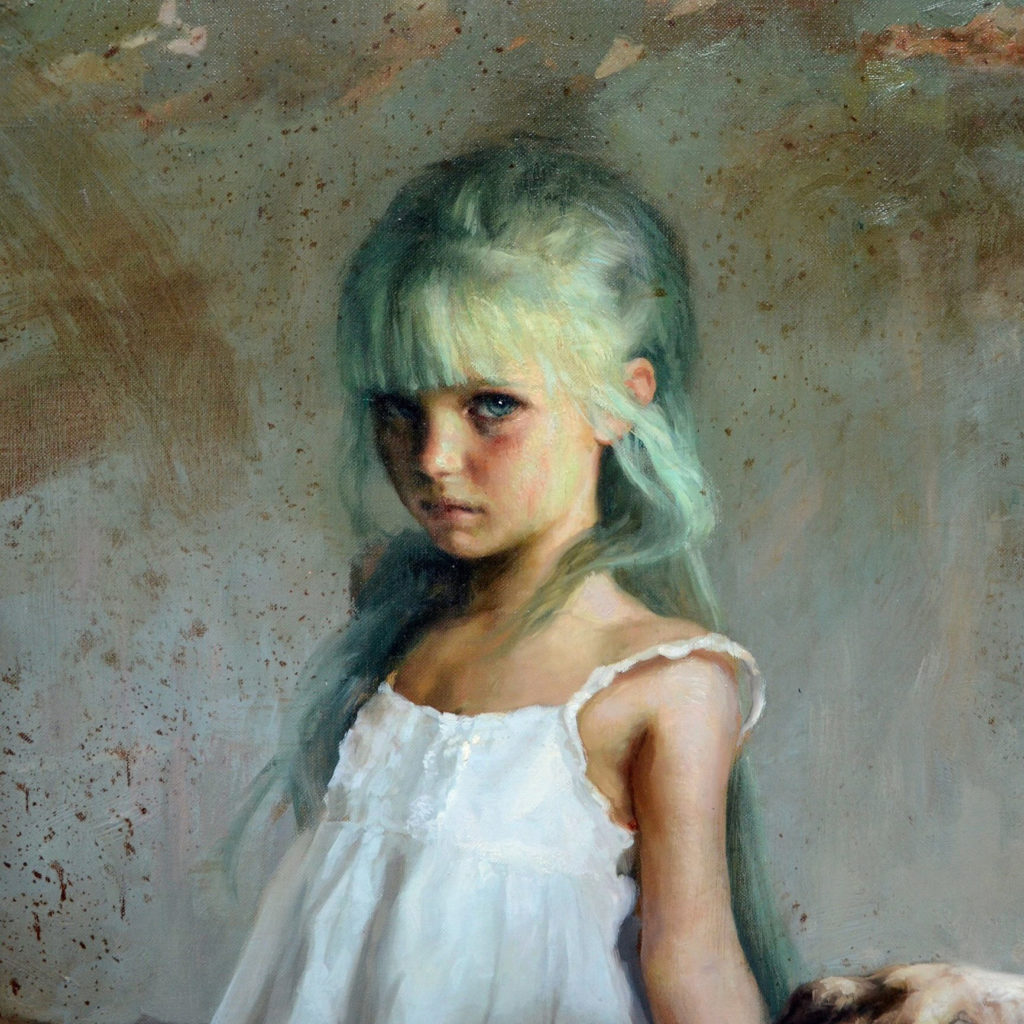
Recently I caught up with Lorca on the phone:
David Molesky: I watched some of the online video interviews about your exhibition at Santiago’s Museo Nacional de Bellas Artes, but I couldn’t understand the Spanish dialogue. Tell me about that show.
Guillermo Lorca: It was great! I was very happy with the installation and how the audience accepted my work; more than 100,000 people attended. I exhibited 24 paintings made over three years, many of them large. To have work in that sort of space is truly a luxury; what’s more, I had visited it as a child and dreamed I would exhibit there one day. I’ve been really lucky.
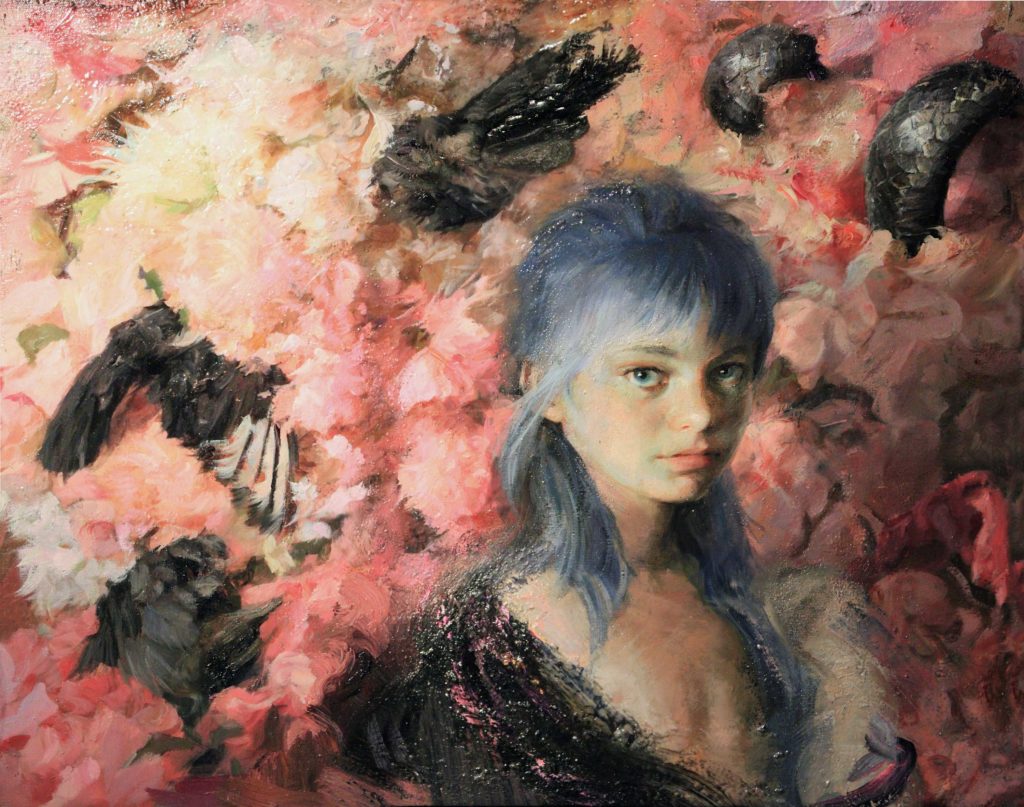
DM: I’ve always been impressed by how you can make working large look so easy. What determines scale in your work?
GL: I like to make the characters in a scale similar to the viewer’s. I start with an idea, then the composition determines the format. Sometimes I can’t help but make something very large. It’s satisfying to be immersed in a painted world; a large format helps me achieve that objective.
DM: Tell me about the colossal portraits.
GL: Those had a very different intention compared to my latest series. I had the idea back in 2007 while studying with Nerdrum. I loved the series of small portraits that he made for his exhibition in Porsgrunn [Norway]. I asked myself how the language of portraiture would work at an enormous scale, like a billboard advertisement.
DM: Who are the young people in your paintings?
GL: In earlier works, I painted Lolita characters based on models who were either my friends or my friends’ sisters. More recently, I have painted children who play roles to represent a different point of view. The girls with colored hair are characters from another world. In some paintings, I modify my models or mix them together; I might put one head on the body of another or modify their features until I create a being who doesn’t actually exist, which is the case in “Laura and the Dogs.”
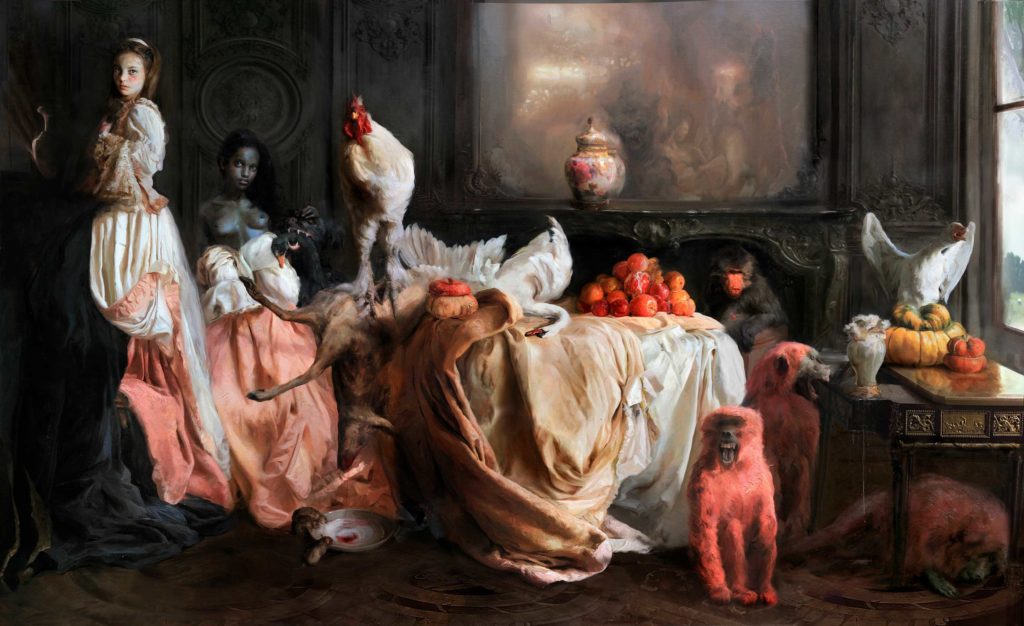
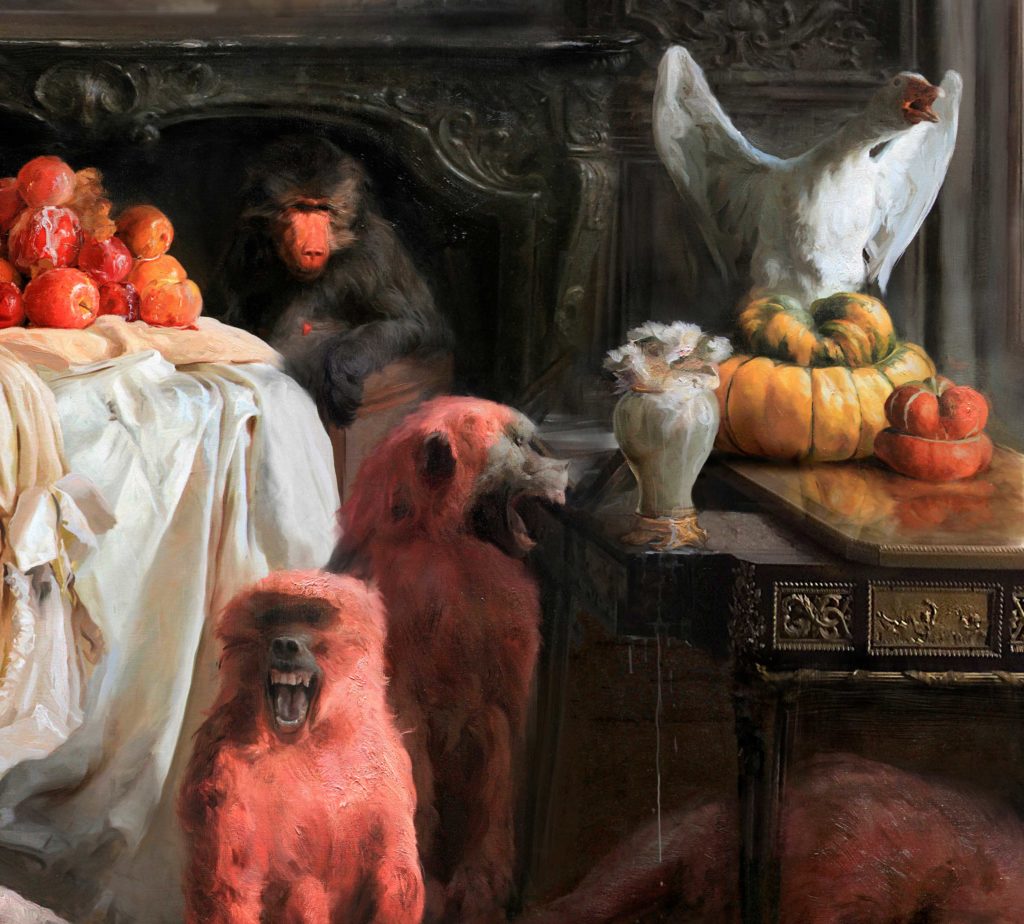
DM: What are the inspirations behind the subjects of your recent narrative paintings depicting girls, dogs, and meat?
GL: I feel like I am getting closer to my true self in the latest paintings. As I reach for an imaginary amoral world with few adults, the children, animals, and other natural forms become the protagonists. The interactions between them express in imagery what is difficult to say in words. The paintings can be read in many different ways, all of which have validity.
“Eternal Life,” for example, contains the archetypical tree, our former home as pre-hominids. The tree has been symbolically occupied to address the exit from paradise, our own instinctive state, animals’ innocence, etc. In this tree, the girl is either playing dead or has actually died. It is watched by a pack of dogs, one of which has been wounded in a fight. It’s hard to tell if they are protecting or waiting for someone, or even if they appreciate our presence. The birds search the branches for something we don’t know. Within such “narrative” scenes I am not seeking a definitive meaning, but my images are not random either. One must take charge of the symbols and understand that they may signify different things all at the same time.
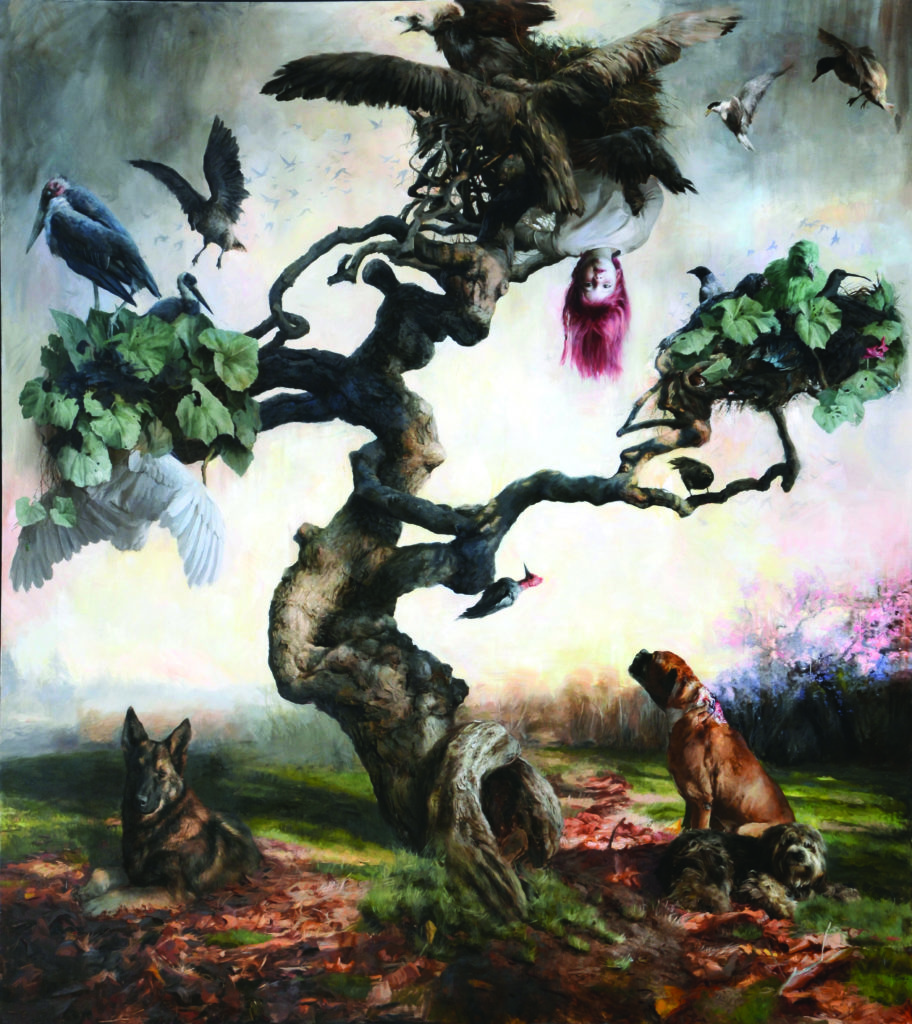
DM: What did you learn from working with Nerdrum?
GL: My stay in Norway was both enriching and strange. It was the middle of winter (I should have gone in summer!) and there was almost no social interaction beyond the few other students, with whom I could barely speak in English, much less Norwegian. Odd is a very particular person, completely committed to his job. What interested me most was the expressive side of his painting.
DM: How was it seeking classical training in Chile? How did you stumble upon your style of painting?
GL: Chile has no academic art schools of excellence, so studying art there was a lonely and disappointing experience. In fact, I dropped out during the third year and carried on with my studies in another way. Fortunately, I had Maurizio Marini’s superb book about Velázquez with its high-quality reproductions. It was a gift from my mother, perhaps one of the best I’ve ever received, or at least the most useful.
DM: Who are some of your favorite contemporary painters?
GL: I love Nicola Samori, Adrian Ghenie, Odd Nerdrum, Walton Ford, and Beth Cavener, just to name a few talents. In contemporary art there are many great things mixed with other bad ones in the same blender. Making distinctions is difficult.
DM: When we were in Norway, you showed me photos of your murals. Could you tell me more about them?
GL: I made the first in the cellar of a vineyard when I was 20. Its dimensions were 13 x 131 feet, painted in oils. I had never made anything bigger than 40 x 60 inches before. The second was for a casino, 98 feet wide. Making the murals was a good way of forcing myself to compose better. Then came the giant portraits displayed in the subway station. Now I am working on large paintings, but if another worthwhile mural project comes up, I’ll do it.


DM: What themes are you exploring now?
GL: I am interested in such topics as death, eroticism, and nature — and their symbols. I try to find a balance between my own subjectivity and a collective subconscious. I believe that animals will gain more prominence, but even though I plan ahead, new ideas come up as I paint and the direction changes.
DM: What books have you read that inspire you? Movies? Plays?
GL: I love reading! I really like Fyodor Dostoevsky, Gabriel García Márquez, Ágota Kristóf, Doris Lessing, and Yasunari Kawabata. I am also interested in philosophy and psychology: Carl Jung, Sigmund Freud, Michel Foucault, Friedrich Nietzsche, Melanie Klein, and more. I don’t know if books directly inspire me. I read more as a hobby. My inspiration comes from other artists, from nature and movies, especially Andrei Tarkovsky and Akira Kurosawa. I don’t like closing myself to any possible source of inspiration. A part of me is always looking carefully at everything going on, and it alerts me to something worth closer attention.
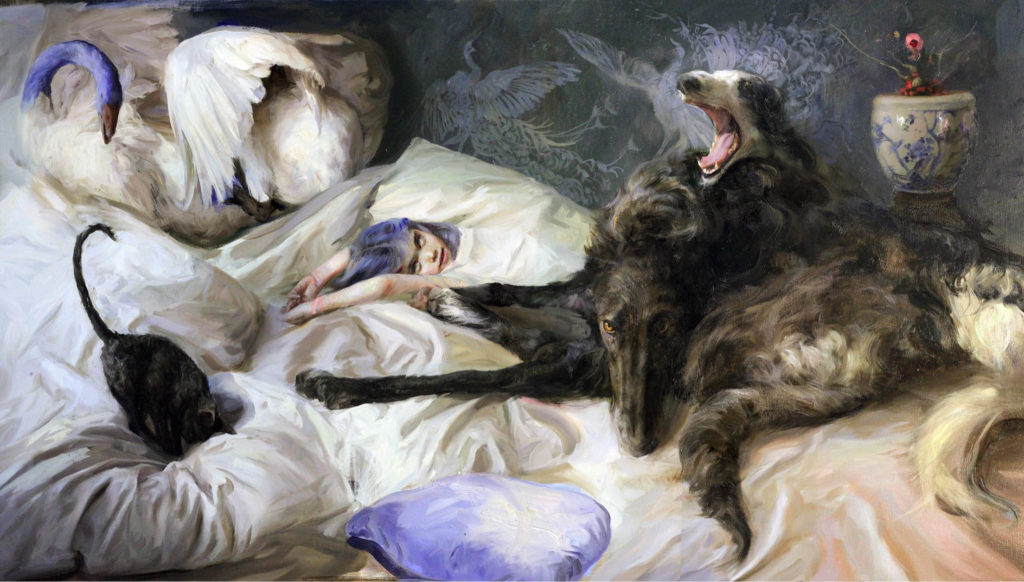
DAVID MOLESKY is a representational artist and writer based in Brooklyn. His oil paintings of figurative narratives and turbulent elements are part of museum collections in the U.S., Europe, and Asia.
This article was originally published in Fine Art Connoisseur magazine (January/February 2019)
> Sign up to receive Fine Art Today, our free weekly e-newsletter
> Click here to subscribe to Fine Art Connoisseur magazine, so you never miss an issue








